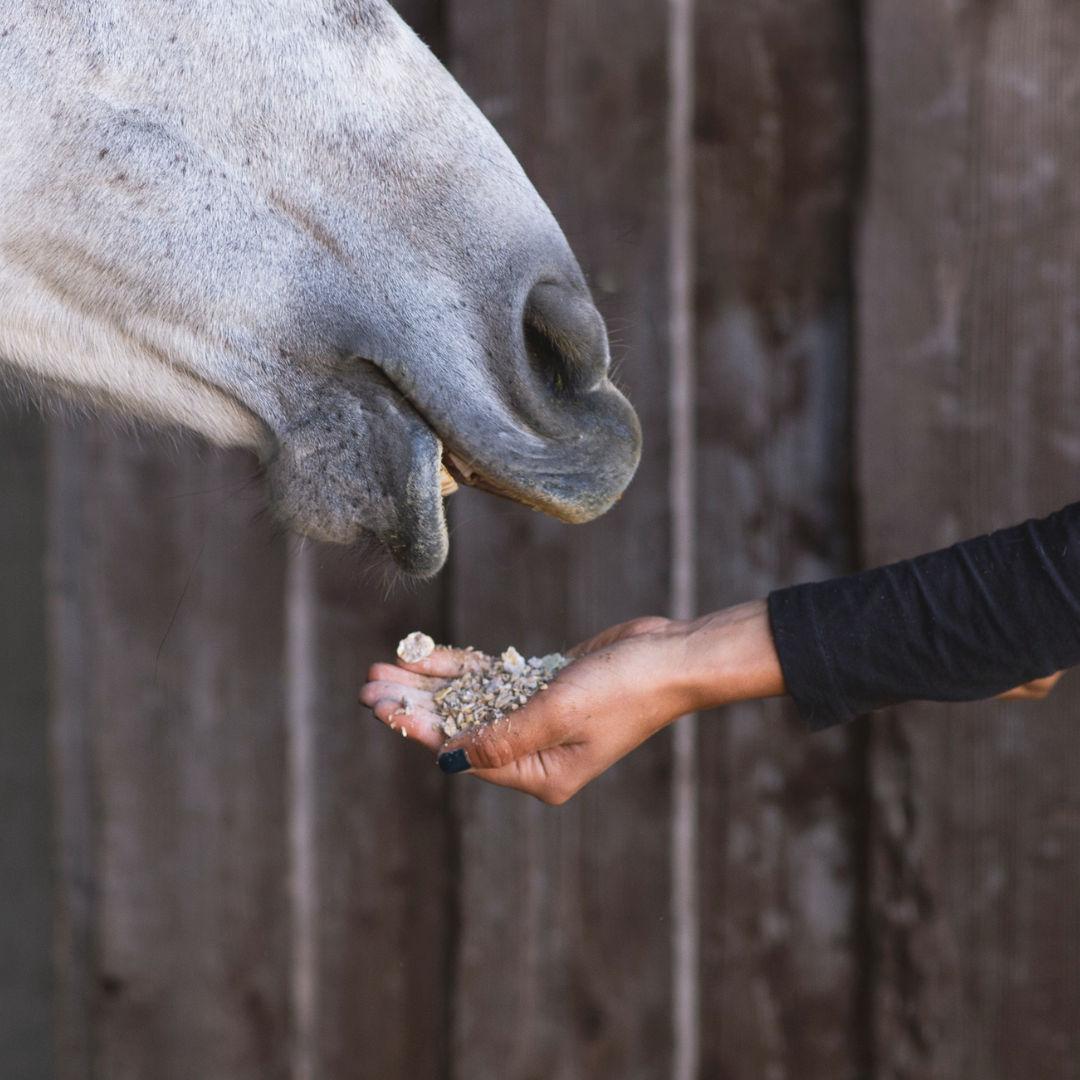Nutritional Support for Horses with Cushing’s Disease & Insulin Resistance
Share

Horses diagnosed with conditions like Cushing's disease (PPID) and insulin resistance (IR) require careful dietary management to address their unique metabolic needs. These conditions, often linked to endocrine disorders, can lead to complications such as laminitis, muscle loss, and energy imbalances if not managed appropriately. Let's look at each condition and how targeted nutritional strategies can make a difference.
What is Cushing's Disease (PPID)?
Cushing's disease, or pituitary pars intermedia dysfunction (PPID), is a hormonal disorder caused by dysfunction in the pituitary gland. It typically affects older horses and is characterized by symptoms such as a long, curly coat that fails to shed, excessive drinking and urination, muscle wasting, lethargy, and a predisposition to laminitis.
Why Nutrition Matters:
PPID impacts hormone regulation, including cortisol levels, affecting metabolism, immune function, and overall health. While medication like pergolide can help manage the condition, nutrition is crucial in controlling symptoms and preventing secondary complications.
Key Nutritional Strategies for Horses with Cushing's Disease
Low Non-Structural Carbohydrates (NSC):
Horses with PPID often develop insulin dysregulation, making a low-sugar, low-starch diet essential. Aim for feeds with an NSC content of less than 12%. Avoid cereal grains and molasses-laden products.
High-Quality Forage:
Forage should be the cornerstone of the diet. Hay with low NSC levels is ideal. Testing hay for sugar and starch content can help you choose the right type. Soaking hay for 30-60 minutes before feeding can further reduce NSC content.
Antioxidants for Immune Support:
Horses with PPID may benefit from vitamin E and selenium supplements to combat oxidative stress. Omega-3 fatty acids in flaxseed or fish oil can also reduce inflammation and support overall health.
Support for Muscle Maintenance:
Muscle wasting is common in PPID horses. Providing adequate protein, mainly feeds rich in essential amino acids like lysine and methionine, can help maintain muscle mass and strength.
Monitoring Body Condition:
Horses with PPID may be prone to weight loss or obesity. Adjust calorie intake accordingly to ensure they stay within a healthy body condition score.
Insulin Resistance (IR) in Horses
Insulin resistance (IR) occurs when a horse's cells become less responsive to insulin, leading to elevated blood glucose levels. It is often associated with equine metabolic syndrome (EMS) and obesity. Key symptoms include fat deposits in unusual areas (e.g., crest of the neck, tailhead), recurrent laminitis, and difficulty maintaining weight.
Why Nutrition Matters:
Insulin resistance disrupts glucose metabolism, increasing the risk of laminitis and other complications. Proper diet management can help regulate blood sugar and insulin levels, improving the horse's health and reducing risks.
Key Nutritional Strategies for Horses with Insulin Resistance
Strict Control of NSC Intake:
Diets should be low in NSC to prevent blood sugar spikes. Choose feeds formulated explicitly for metabolic conditions, and avoid grains, sweet feeds, and lush pasture.
Pasture Management:
Limit grazing, especially in the early morning, late afternoon, and during periods of cool weather when grass sugar levels are high. Consider using a grazing muzzle or creating a dry lot for turnout.
Low-Calorie Forage Alternatives:
Replace calorie-dense hay or pasture with low-calorie forage alternatives such as soaked hay, hay cubes, or pelleted hay products designed for metabolic horses.
Exercise as a Supplement to Diet:
-
Regular, low-impact exercise can improve insulin sensitivity and help with weight management. Ensure the exercise plan is safe and approved by a veterinarian, particularly for horses recovering from laminitis.
Nutritional Supplements:
- Magnesium and Chromium: These nutrients may help improve insulin sensitivity.
-
Vitamin E and Omega-3 Fatty Acids: These help reduce inflammation and support metabolic health.
Cushing's Disease vs. Insulin Resistance: Key Differences
- Age Group: PPID is more common in older horses (15+ years), while IR can occur in younger or middle-aged horses.
- Symptoms: PPID horses often show a long, shaggy coat and muscle loss, while IR horses typically exhibit obesity and regional fat deposits.
-
Treatment: PPID is often treated with medication like pergolide, while IR is managed primarily through diet and exercise.
Despite these differences, both conditions benefit significantly from a diet focused on low NSC, high-quality forage, and tailored supplementation.
Additional Considerations for Managing Both Conditions

Routine Bloodwork:
Regular insulin, glucose, and ACTH level testing helps monitor the progression of these conditions and adjust dietary or medical interventions accordingly.
Body Weight Monitoring:
Keep track of your horse's body weight and condition using a weight tape or scale, as this can signal changes in their health or the effectiveness of their diet.
Hydration and Digestive Support:
Soaked feeds and probiotics can support digestion and overall hydration, particularly in horses with compromised metabolic systems.
Managing horses with Cushing's disease or insulin resistance requires a proactive and informed approach to nutrition. Focusing on low-sugar, high-fiber diets and providing targeted supplements can support your horse's health and improve their quality of life. Collaborate with your veterinarian and equine nutritionist to develop a plan tailored to your horse's needs.

